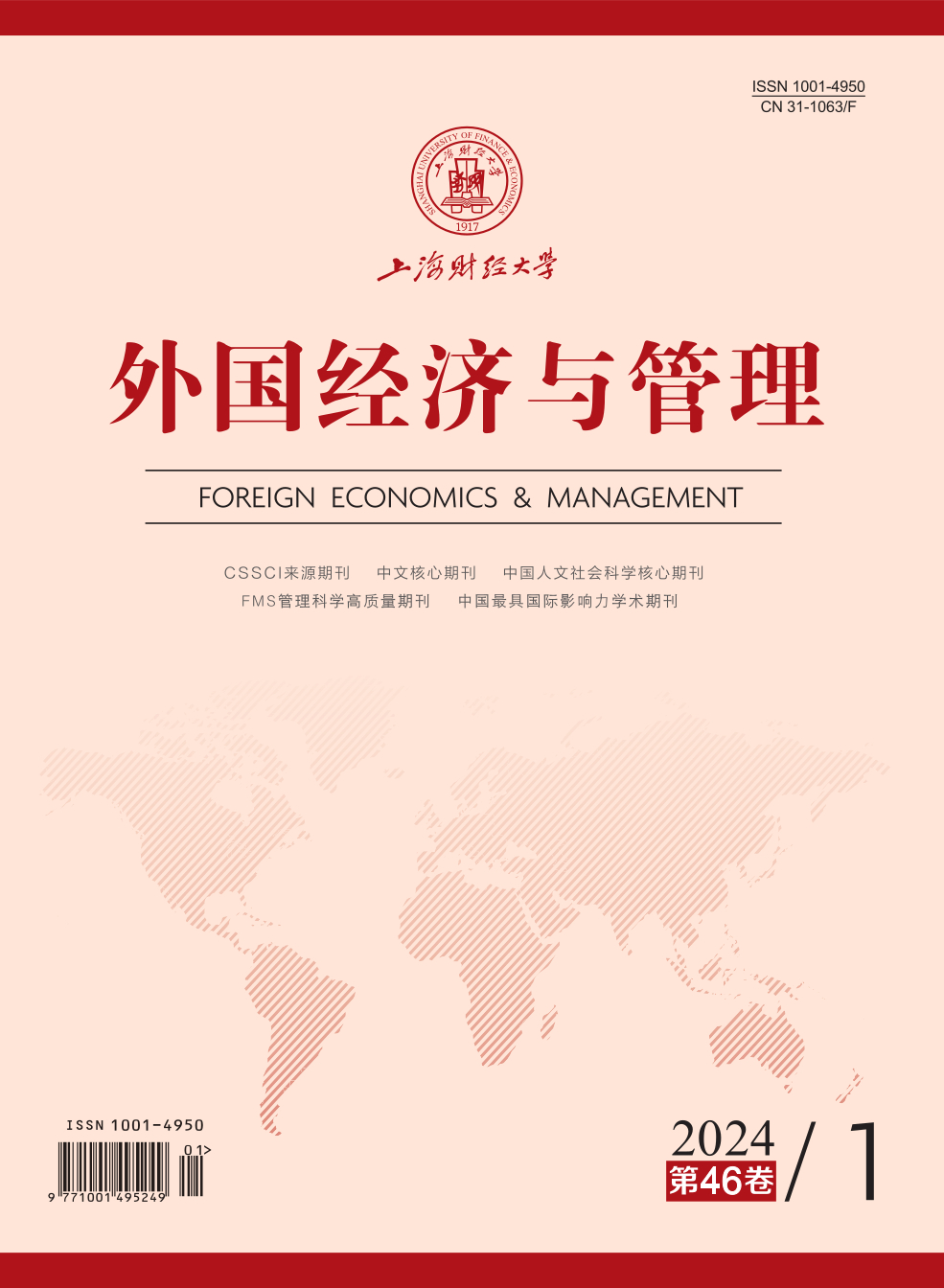专精特新企业是指具有专业化、精细化、特色化和新颖化特征,聚焦某一细分领域并能够提供差异化优势的高品质产品和服务,致力于在中国本土乃至全球细分领域获得市场份额和创新能力双重引领地位的中小企业。专精特新企业成长对解决我国关键核心技术“卡脖子”问题和强化产业链韧性具有重要意义,但现有文献仍停留在实践观察、经验梳理和碎片化研究阶段,亟待从理论层面对其进行系统梳理,而已有长期研究的隐形冠军也为此提供了理论参照。本文系统梳理了国内外高水平期刊发表的专精特新企业和隐形冠军文献。首先,分析了在企业成长中具有特殊地位的专精特新“小巨人”、制造业“单项冠军”和隐形冠军的内涵、特征及其异同。其次,在梳理专精特新企业成长的驱动因素、机制过程、绩效表征、系统影响和研究方法的基础上,借鉴隐形冠军研究成果构建了整合分析框架。最后,从宏观政策环境层面、中观区域与网络层面和微观企业层面以及如何链接宏观、中观、微观层面提出专精特新企业成长的未来研究议题。在专精特新企业“实践富矿”与“研究洼地”并生共存的背景下,本文有助于进一步丰富和拓展专精特新企业成长理论,为其高质量发展提供理论启发和经验借鉴。
专精特新企业成长研究:综述与展望
摘要
参考文献
1 蔡双立, 郭嫱. 专精特新企业学术型高管与企业持续创新——企业激励机制与风险承担水平的双调节效应[J]. 浙江工商大学学报, 2023, (1): 120-134.
2 曹虹剑, 张帅, 欧阳峣, 等. 创新政策与专精特新中小企业创新质量[J]. 中国工业经济, 2022, (11): 135-154.
3 曹梦弋, 夏青. 产业政策与“专精特新”企业全要素生产率[J]. 外国经济与管理, 2023, 45(10): 84-100.
4 曹钰华, 张延莉, 石蓉荣, 等. 数字化转型驱动的专精特新“小巨人”组织韧性前因组态研究—— 基于上市企业年报文本挖掘的fsQCA分析[J]. 外国经济与管理, 2023, 45(10): 68-83.
5 陈武元, 蔡庆丰, 程章继. 高等学校集聚、知识溢出与专精特新“小巨人”企业培育[J]. 教育研究, 2022, 43(9): 47-65.
6 丁建军, 刘贤, 王淀坤, 等. 国家级专精特新“小巨人”企业空间分布及其影响因素[J]. 经济地理, 2022, 42(10): 109-118.
7 丁建军, 王淀坤, 刘贤. 长三角地区专精特新“小巨人”企业空间分布及影响因素研究[J]. 地理研究, 2023, 42(4): 1009-1028.
8 董志勇, 李成明. 专精特新中小企业高质量发展态势与路径选择[J]. 改革, 2021, (10): 1-11.
9 杜晶晶, 万晶晶, 郝喜玲, 等. 中国“隐形冠军”企业产业多元化战略的形成路径研究——基于模糊集的定性比较分析[J]. 研究与发展管理, 2023, 35(3): 78-90.
10 葛宝山, 赵丽仪. 创业导向、精一战略与隐形冠军企业绩效[J]. 外国经济与管理, 2022, 44(2): 117-135.
11 贾依帛, 苏敬勤, 张雅洁. 全球价值链下我国隐形冠军企业形成过程的多案例研究[J]. 外国经济与管理, 2023, 45(10): 35-50.
12 蒋志文, 郑惠强. 基于实证的“专精特新”企业培育路径及政策影响分析[J]. 中国软科学, 2022, (S1): 63-70.
13 李平, 孙黎. 集聚焦跨界于一身的中流砥柱: 中国“精一赢家”重塑中国产业竞争力[J]. 清华管理评论, 2021, 97(12): 76-83.
14 李树文, 罗瑾琏, 张志菲. 从定位双星到布局寰宇: 专精特新企业如何借助关键核心技术突破实现价值共创?[J/OL]. 南开管理评论. http://kns.cnki.net/kcms/detail/12.1288.F.20230830.1315.002.html, 2023-08-30.
15 李振东, 梅亮, 朱子钦, 等. 制造业单项冠军企业数字创新战略及其适配组态研究[J]. 管理世界, 2023, 39(2): 186-207.
16 刘昌年, 梅强. 专精特新与小微企业成长路径选择研究[J]. 科技管理研究, 2015, 35(5): 126-130.
17 刘诚达. 制造业单项冠军企业研发投入对企业绩效的影响研究——基于企业规模的异质门槛效应[J]. 研究与发展管理, 2019, 31(1): 33-43.
18 刘小峰, 彭扬帆, 徐晓军. 选优扶强: 老少边区特色农业“一县一业”格局何以形成——盐池滩羊的纵向案例研究[J]. 管理世界, 2023, 39(7): 46-63.
19 刘志彪, 徐天舒. 培育“专精特新”中小企业: 补链强链的专项行动[J]. 福建论坛(人文社会科学版), 2022, 1(1): 23-32.
20 刘志彪. 产业政策转型与专精特新中小企业成长环境优化[J]. 人民论坛, 2022, (3): 40-43.
21 毛军权, 敦帅. “专精特新”中小企业高质量发展的驱动路径——基于TOE框架的定性比较分析[J]. 复旦学报(社会科学版), 2023, 65(1): 150-160.
22 王伟楠, 王凯, 严子淳. 区域高质量发展对“专精特新”中小企业创新绩效的影响机制研究[J]. 科研管理, 2023, 44(2): 32-44.
23 王伟光, 韩旭. 国际化速度、双元创新与“专精特新”企业绩效—— 基于115家中国制造业单项冠军上市企业的实证研究[J]. 外国经济与管理, 2023, 45(10): 51-67.
24 王瑶, 曾德明, 李健, 等. 桥接科学家创始人与企业技术创新绩效——基于专精特新“小巨人”企业的分析[J]. 科学学研究, 2023, 41(9): 1690-1701.
25 邬爱其, 史煜筠. 专业制胜——中小企业专精特新成长之路[M]. 杭州: 浙江大学出版社, 2022.
26 肖雄辉, 傅慧. 数字创业成长: 文献述评与研究展望[J]. 外国经济与管理, 2023, 45(6): 118-136.
27 夏清华, 朱清. “专精特新”企业突破式创新的组态分析与范式选择[J]. 外国经济与管理, 2023, 45(10): 20-34.
28 许晖,李阳,刘田田等. “专精特新”企业如何突破专业化“锁定”困境?——创新搜寻视角下的多案例研究[J]. 外国经济与管理, 2023, 45(10): 3-19.
29 余澳, 张羽丰, 刘勇. “专精特新”中小企业数字化转型关键影响因素识别研究——基于1625家专精特新中小企业的调查[J]. 经济纵横, 2023, (4): 79-89.
31 张璠, 王竹泉, 于小悦. 政府扶持与民营中小企业专精特新转型——来自省级政策文本量化的经验证据[J]. 财经科学, 2022, (1): 116-132.
33 张司飞, 陈勇岐. “专精特新”中小企业创新绩效提升路径研究[J/OL]. 科学学研究.https://doi.org/10.16192/j.cnki.1003-2053.20230419.001, 2023-07-21.
34 张晓辉, 赵爱民. 加快专精特新中小企业国际化发展[J]. 宏观经济管理, 2023, (5): 39-45,52.
35 赵晶, 孙泽君, 程栖云, 等. 中小企业如何依托“专精特新”发展实现产业链补链强链——基于数码大方的纵向案例研究[J]. 中国工业经济, 2023, (7): 180-200.
36 赵向阳. 大变局下的中国管理2: 专精特新之路[M]. 北京: 中国人民大学出版社, 2023.
37 周婷婷, 李孟可. 硬科技创新、行业科技自立自强与专精特新企业跨量级发展[J]. 软科学, 2023, 37(11): 57-64.
38 Audretsch D B, Lehmann E E, Schenkenhofer J. Internationalization strategies of hidden champions: Lessons from Germany[J]. Multinational Business Review, 2018, 26(1): 2-24. DOI:10.1108/MBR-01-2018-0006
39 Audretsch D B, Lehmann E E, Schenkenhofer J. A context-choice model of niche entrepreneurship[J]. Entrepreneurship Theory and Practice, 2021, 45(5): 1276-1303. DOI:10.1177/1042258720936042
40 Bell J, McNaughton R, Young S. ‘Born-again global’ firms: An extension to the ‘born global’ phenomenon[J]. Journal of International Management, 2001, 7(3): 173-189. DOI:10.1016/S1075-4253(01)00043-6
41 Din F U, Dolles H, Middel R. Strategies for small and medium-sized enterprises to compete successfully on the world market: Cases of Swedish hidden champions[J]. Asian Business & Management, 2013, 12(5): 591-612.
42 Kim M, Park H. A meta-analysis comparing factors affecting the growth of SMEs: The case of Germany and South Korea[J]. Journal of Scientific & Industrial Research, 2019, 78: 852-857.
43 Lei L N, Fu Y N, Wu X B, et al. The match between structural attributes and content-based orientation of managerial cognition: An exploratory fsQCA study of ‘hidden champions’[J]. Management and Organization Review, 2022, 18(2): 395-423. DOI:10.1017/mor.2021.44
44 Lei L N, Wu X B, Tan Z Y. The growth of hidden champions in China: A cognitive explanation from integrated view[J]. Chinese Management Studies, 2020, 14(3): 613-637. DOI:10.1108/CMS-06-2019-0206
45 Penrose E. The theory of the growth of the firm[M]. Oxford: Basil Blackwell, 1959.
46 Schenkenhofer J, Wilhelm D. Fuelling Germany’s Mittelstand with complementary human capital: The case of the Cooperative State University Baden-Württemberg[J]. European Journal of Higher Education, 2020, 10(1): 72-92. DOI:10.1080/21568235.2019.1694421
47 Schenkenhofer J. Hidden champions: A review of the literature & future research avenues[J]. Management Review Quarterly, 2022, 72(2): 417-482. DOI:10.1007/s11301-021-00253-6
48 Shepherd D, Wiklund J. Are we comparing apples with apples or apples with oranges? Appropriateness of knowledge accumulation across growth studies[J]. Entrepreneurship Theory and Practice, 2009, 33(1): 105-123. DOI:10.1111/j.1540-6520.2008.00282.x
49 Simon H. Lessons from Germany’s midsize giants[J]. Harvard Business Review, 1992, 70(2): 115-123.
50 Simon H. Hidden champions: Lessons from 500 of the world's best unknown companies[M]. Boston: Harvard Business Review Press, 1996: 113-117.
51 Simon H. Hidden champions of the twenty-first century: Success strategies of unknown world market leaders[M]. New York: Springer, 2009.
52 Sun S L, Shi W, Ahlstrom D, et al. Understanding institutions and entrepreneurship: The microfoundations lens and emerging economies[J]. Asia Pacific Journal of Management, 2020, 37(4): 957-979. DOI:10.1007/s10490-020-09738-6
53 Sutherland I, Purg D. Leadership of hidden champions: From vision to communityship[A]. McKiernan P, Purg D. Hidden champions in CEE and turkey[M]. Berlin Heidelberg: Springer, 2013.
54 Venohr B, Meyer K E. The German miracle keeps running: How Germany's hidden champions stay ahead in the global economy[R]. SSRN 991964, 2007.
55 Voudouris I, Lioukas S, Makridakis S, et al. Greek hidden champions: : Lessons from small, little-known firms in Greece[J]. European Management Journal, 2000, 18(6): 663-674. DOI:10.1016/S0263-2373(00)00057-8
56 Wiklund J, Patzelt H, Shepherd D A. Building an integrative model of small business growth[J]. Small Business Economics, 2009, 32(4): 351-374. DOI:10.1007/s11187-007-9084-8
57 Witt A, Carr C. A critical review of hidden champions and emerging research findings on their international strategies and orientations[A]. Cook G. Johns J. The changing geography of international business[M]. London: Palgrave Macmillan, 2013.
58 Xia Q H, Zhu Q, Tan M Q, et al. A configurational analysis of innovation ambidexterity: Evidence from Chinese niche leaders[J/OL]. Chinese Management Studies, 2023. DOI: 10.1108/CMS-01-2023-0032.
59 Yoon B. How do hidden champions differ from normal small and medium enterprises (SMEs) in innovation activities[J]. Journal of Applied Sciences Research, 2013, 9(13): 6257-6263.
引用本文
曾宪聚, 曾凯, 任慧, 等. 专精特新企业成长研究:综述与展望[J]. 外国经济与管理, 2024, 46(1): 62-76.
导出参考文献,格式为:
上一篇:弱势创业内涵特征、研究议题与展望





 7705
7705  19375
19375

